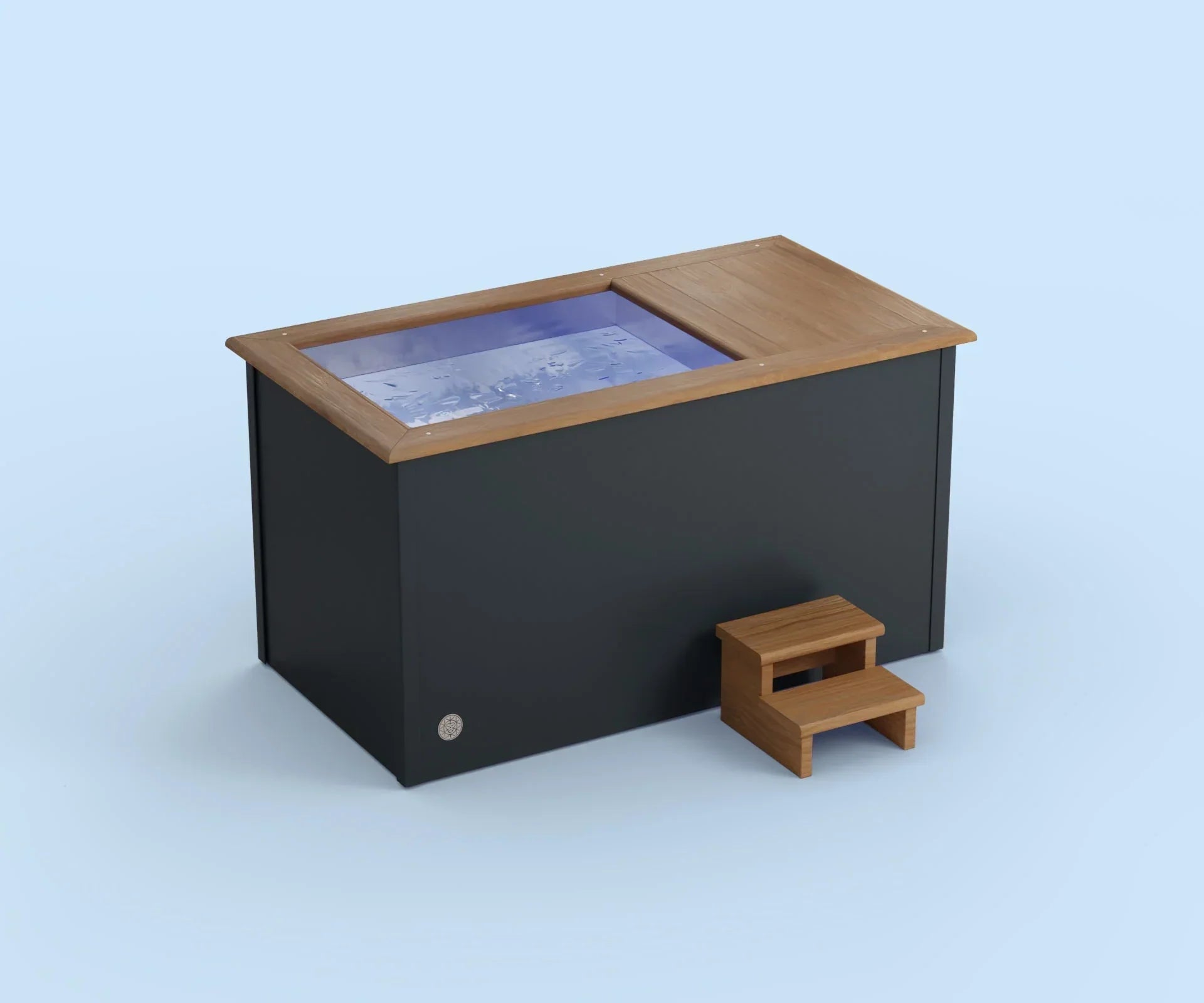Thinking of jumping into an Ice Bath but not sure if you need swimwear or a spacesuit? Short answer: Wear snug, quick-dry gear that covers your bits but lets the cold do its magic. From Cold Plunge Tubs to your first Ice Bath Tub, here’s how to dress for the chill.

The Essentials: What to Wear During Your Ice Bath
Primary Clothing for Cold Immersion
Swimwear (Bathing Suits, Speedos, Board Shorts, Bikinis, One-Piece Suits)
The go-to choice for most people taking an ice bath is standard swimwear. It allows for maximum skin exposure while keeping you decent.
Stick to quick-drying materials like nylon or polyester. These fabrics don’t cling to the body or stay heavy with water.
Choose a snug fit—loose items create drag and reduce contact with the cold water. Whether it’s briefs or a one-piece suit, simple and secure is best.
Considering Privacy: To Wear or Not to Wear?
In private Cold Plunge setups or home Ice Bath Tubs, some choose to go nude for full immersion benefits. That’s perfectly fine if you're alone and comfortable.
However, in public spaces, gyms, or shared tubs, swimwear is the polite and practical choice. Comfort and context should guide what you wear—or don’t.
Protecting Sensitive Areas and Enhancing Comfort
Neoprene Socks or Booties
Cold feet aren’t just unpleasant—they can cut your session short. Neoprene socks or booties help prevent numbness, improve grip, and reduce shock to the toes.
You can find them in various lengths, from ankle-high to knee-length, depending on your needs. They’re ideal for beginners or those going in for longer dips.
Headwear (Hats, Neoprene Caps, Beanies)
A wool beanie or neoprene cap helps to retain body heat, which is mostly lost through the head.
It also protects the ears from water entry, minimising the risk of discomfort or cold shock. This is especially helpful during extended sessions or for those sensitive to cold water around the head.
Additional Layers for Beginners or Increased Insulation
If you're just starting out with cold plunges, you may want to add extra layers. A long-sleeved thermal top or neoprene shorts can make a big difference.
These help regulate body temperature while you get used to the sensation. Lightweight layers made from quick-dry, synthetic material are best.
For more protection, especially in very cold tubs, some opt for a short wetsuit or full neoprene suit.
What Not to Wear and Why
Materials to Avoid in an Ice Bath
Cotton Clothing
Cotton is a no-go. It soaks up water, stays wet, and offers no insulation when you need it most.
Worse, it increases your chances of feeling chilled and uncomfortable. Stick to synthetic or technical fabrics that wick moisture and dry fast.
Excessive Layering
Wearing too much can trap cold water against your skin. It also limits your ability to move comfortably in the tub.
Overdoing it with layers might even reduce the benefits of cold therapy. Less is more—just enough to protect, not enough to weigh you down.
Items to Remove Before Your Plunge
Jewellery
Before stepping into the Ice Bath Tub, it’s smart to take off all jewellery.
Rings, necklaces, and bracelets can get painfully cold and may even irritate the skin. Some items also tighten when exposed to cold, which can be uncomfortable or risky.
Beyond the Plunge: Essential Accessories and Post-Ice Bath Care

Pre- and During-Plunge Accessories
Timer (for monitoring duration safely)
Keep a timer close by to monitor how long you're in the cold water. Start small—two to five minutes is a good entry point—and build up as your body adapts.
Non-slip Mat, Chair, or Step Stool (for safe entry and exit)
An ice bath is no place for slips and spills. Use a non-slip mat, stool, or even a small chair to safely get in and out of the Cold Plunge Tub.
This is especially helpful when your muscles are cold and reflexes are slower.
Post-Ice Bath Essentials: Warming Up and Recovery
Warm, Comfortable Clothing
Once you're out, it’s important to warm up quickly. Wrap yourself in thermal socks, a fleece jumper, and dry, insulating trousers.
Choose materials like wool, fleece, or synthetic blends to trap warmth effectively.
Towels and Robes
Have a thick towel or robe waiting nearby. It should be large enough to wrap around you immediately after your dip.
Absorbent, soft materials help dry you fast and retain warmth as your body starts to heat up again.
Warm Beverages
Prepare a thermos of tea, bone broth, or coffee ahead of time. Warm drinks help raise your core body temperature and add a layer of post-plunge comfort.
Sipping slowly while wrapped up gives your body a gentle boost back to normal.
Takeaways
-
Wear snug, synthetic swimwear and consider neoprene gear for extra comfort.
-
Protect your feet, head, and sensitive areas—especially if you’re a beginner.
-
Avoid cotton, jewellery, and excessive layers that could backfire in cold water.
-
Prepare your space with safety gear, and always plan a warm, comfy recovery.
-
Dress wisely, stay safe, and enjoy the chill benefits of your Cold Plunge routine.






